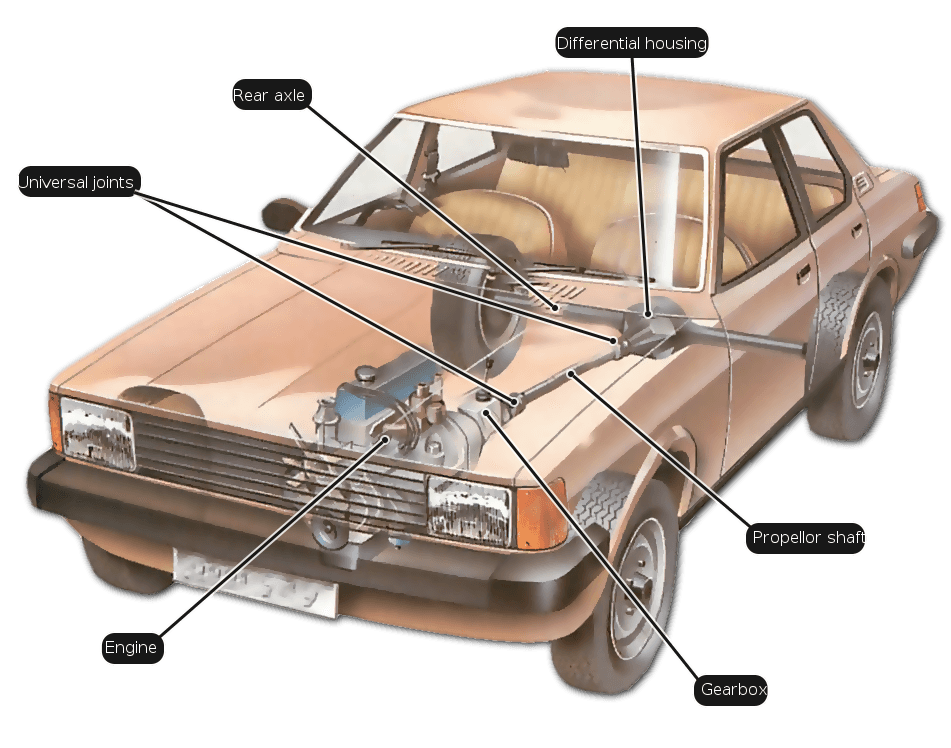Why Are Most Trucks Rear Wheel Drive? VanDimensions

Better vehicle balance and therefore better handling is one of the main benefits of a rear-wheel drive vehicle. A front-wheel drive will carry much of the weight of the engine and transaxle, whereas a rear wheel drive will help spread the weight evenly from front to back. This is why most sports cars are rear-wheel drive.
What is the difference between Front Wheel Drive, Mid Wheel Drive, and

Advantages of Front-Wheel Drive If you are shopping for an affordable sedan, it's more than likely front-wheel drive. Rear-wheel-drive sedans are typically reserved for performance.
Benefits of tire rotation Bridgestone Tires PH

Since rear-wheel drive was the best solution available for decades, there are several benefits for buying a car with this setup: RWD offers better weight distribution for improved handling Performance-car makers are always striving for as near to 50-50 front-to-rear weight distribution as possible for the best handling and control.
4DIYers The Different Types of Drivetrain Systems

RWD also benefits acceleration. When a driver hits the gas, it causes the weight of the vehicle to shift backwards. With a rear-wheel drive car, this puts more pressure on the driving wheels, facilitating a faster takeoff than one would see with a front-wheel drive.
FWD v RWD Why the difference between front and rear wheel drive

Drivetrain Options Rear-Wheel Drivetrains (2WD) In rear-wheel drivetrains, power is transferred to the two back wheels. There are many benefits to having power transferred to the rear wheels, including superior handling, acceleration, and braking. Front-Wheel Drivetrains (2WD)
What are the Benefits of RearWheel Drive Systems?

- In The Garage with CarParts.com What is rear-wheel drive? Find out how it works and what its advantages and disadvantages are in this article.
LawnBoy 10515, Gold Series Lawnmower, 1994 (SN 49000014999999) Parts

Since they may offer faster acceleration and greater peak speeds, RWD automobiles are also appreciated by performance buffs. RWD vehicles, however, might provide more of a challenge to drive in some circumstances. In slick terrain, such ice or snow, they may be more difficult to steer as the rear wheels may lose grip more quickly.
This image will help you to know about the advantages and dis

RWD supporters also claim that powering the rear wheels gives drivers more ultimate control in corners, because as the tires begin to lose traction, the driver can effectively tighten the turn.
Front Wheel Drive VS Rear Wheel Drive All Car Leasing

In general, rear-wheel drive cars give the driver a greater sense of control, making sliding and accidents much less prevalent. It is because of this higher level of control that most race and sports cars are rear wheel drive. Cars in mid-race need to be able to make tight turns at incredible speeds while retaining momentum.
Rear Wheel Drive Chassis Weight™ Woodland Scenics

It's called front-wheel drive, and this system has become ubiquitous in cars since the late 1970s. But most trucks, as well as many SUVs and some cars, still use rear-wheel-drive systems, in which.
FWD v RWD Why the difference between front and rear wheel drive

Despite these benefits of FWD, a rear-wheel-drive car provides a better balance for drivers because of its even weight distribution. This also prevents uneven wear of your tires, which can.
Benefits of Front Wheel Drive Part 2

Rear-wheel drive is seen as the enthusiast's choice, because driving the rear wheels leaves the front ones completely free to concentrate on steering, sending more of that wondrous "road.
Rear wheel adapter

Since only the front wheels need to be driven, the distance from the engine to the wheels is very short. This reduces driveline losses due to friction and rotational mass, and results in great fuel economy that almost always beats RWD. Driving the rear wheels from an engine located in the front requires a driveshaft running the length of the.
Benefits of Front Wheel Drive Part 1

Rear-wheel drive is another type of two-wheel drive system and the opposite of front-wheel-drive. The transmission sends the engine's power to the rear wheels with this system.. RWD vehicles generally have an even weight distribution, which offers several benefits for the vehicle and its driver. Some RWD cars feature a 4WD system, which.
featuresbenefitsrear1 Pedders Suspension and Brakes The Car

PRO: Better Traction in Slippery Conditions An AWD sedan will accelerate on slick roads significantly better than a car with two-wheel drive. If there's snow, ice, or mud on the road, it will.
Rear wheel My rear wheel right now. The destination cards … Flickr

AWD vs. 4WD. Front-wheel drive refers to a car in which the transmission sends the engine's power to the front wheels. Rear-wheel drive is the opposite; the engine spins the rear wheels. Four.